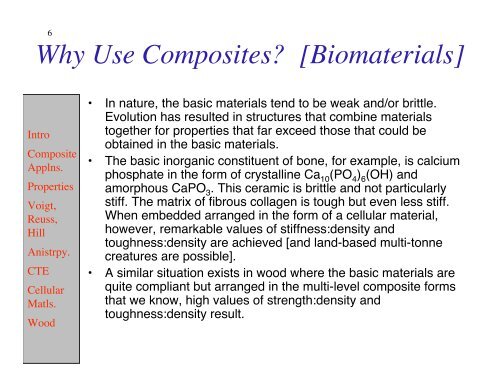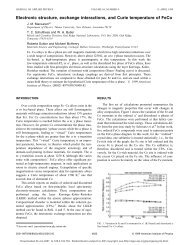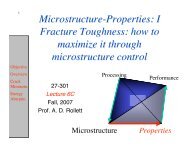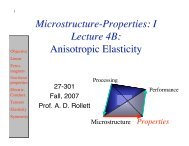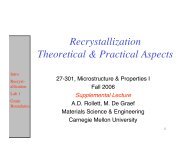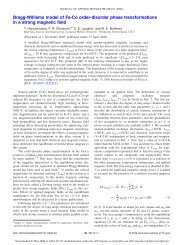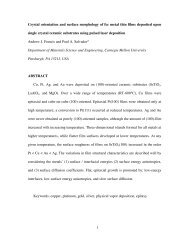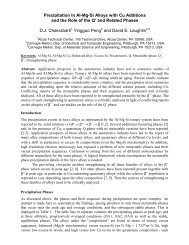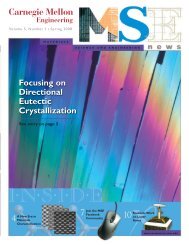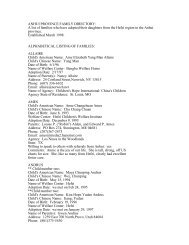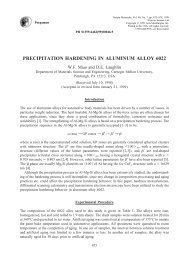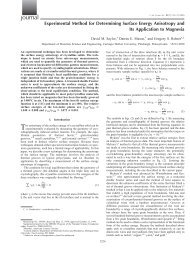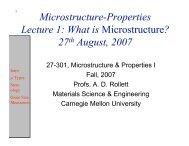L7 composites - Materials Science and Engineering
L7 composites - Materials Science and Engineering
L7 composites - Materials Science and Engineering
Create successful ePaper yourself
Turn your PDF publications into a flip-book with our unique Google optimized e-Paper software.
Intro<br />
6<br />
Why Use Composites? [Biomaterials]<br />
Composite<br />
Applns.<br />
Properties<br />
Voigt,<br />
Reuss,<br />
Hill<br />
Anistrpy.<br />
CTE<br />
Cellular<br />
Matls.<br />
Wood<br />
• In nature, the basic materials tend to be weak <strong>and</strong>/or brittle.<br />
Evolution has resulted in structures that combine materials<br />
together for properties that far exceed those that could be<br />
obtained in the basic materials.<br />
• The basic inorganic constituent of bone, for example, is calcium<br />
phosphate in the form of crystalline Ca 10 (PO 4 ) 6 (OH) <strong>and</strong><br />
amorphous CaPO 3 . This ceramic is brittle <strong>and</strong> not particularly<br />
stiff. The matrix of fibrous collagen is tough but even less stiff.<br />
When embedded arranged in the form of a cellular material,<br />
however, remarkable values of stiffness:density <strong>and</strong><br />
toughness:density are achieved [<strong>and</strong> l<strong>and</strong>-based multi-tonne<br />
creatures are possible].<br />
• A similar situation exists in wood where the basic materials are<br />
quite compliant but arranged in the multi-level composite forms<br />
that we know, high values of strength:density <strong>and</strong><br />
toughness:density result.


